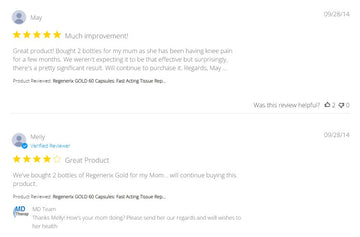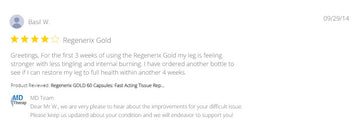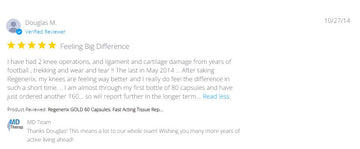Scapular Retractions (Band Row): Train the Shoulder Blade, Calm the Shoulder
by MD therapeutics on Aug 18, 2025
Why scapular retractions (band row) help (the principles)
-
Centers the ball in the socket: Retraction with slight depression lets the rotator cuff center the humeral head, reducing subacromial “pinch.”
-
Rebalances force couples: Lower traps and serratus anterior assist upward rotation/posterior tilt; overactive upper traps settle.
-
Posterior-chain endurance: Rows load rhomboids, mid/low traps, and rear delts—key for posture and overhead tolerance.
-
Scalable & joint-friendly: Resistance and range are easily adjusted to keep pain ≤3/10.
How to do it (precise, range-aware)
Setup:
-
Anchor a light band at mid-sternum height. Stand tall, ribs down, neck long. Hold ends with elbows softly bent, towel roll in each armpit if you tend to shrug.
Movement:
-
Exhale → glide shoulder blades back and slightly down (think “put them in your back pockets”).
-
Elbows travel beside the torso in the scapular plane (≈30–45°); stop before the ribs flare or shoulders jut forward.
-
Inhale → return with control; keep shoulders wide (don’t collapse forward).
Dose & progressions:
-
2–3 sets × 8–12 reps, 3×/week (or daily micro-sets of 6–8).
-
When easy: step back (more tension), add a brief 2–3 s hold at full retraction, or progress to single-arm rows resisting trunk rotation.
-
Stop/modify if night pain worsens or symptoms radiate past the elbow.
Common form errors to avoid: shrugging; rib flare; elbow yanking past the body with the shoulder rolling forward; head poking.
Limits of exercise alone
-
Doesn’t fix systemic drivers (sleep, stress, diet, metabolic health).
-
Flares cap training load, causing stop–start progress.
-
Rows won’t by themselves restore full overhead strength—most plans need cuff loading, thoracic mobility, and gradual elevation work.
-
Tendon/capsule remodeling is slow (months), so pair training with recovery and nutrition.
Why add nutritional correction
-
Improve circulation so cuff, capsule, and peri-scapular tissues receive oxygen/nutrients post-session.
-
Promote repair via collagen peptides and hyaluronic acid supporting joint matrix and glide.
-
Reduce excessive inflammation to keep daily training tolerable.
-
Avoid tissue damage by buffering oxidative/catabolic stress from repetitive loading.
Botanicals & nutrients often paired with shoulder-friendly rehab
(Traditional lore + published research; evidence ranges from promising to mixed. Check interactions and personal suitability.)
-
Ginger: Traditional Ayurveda/East Asian use for circulation and aches; standardized extracts show modest symptom support for some with osteoarthritis.
-
Turmeric/Curcumin: Ayurvedic staple; bioavailability-enhanced curcumin often improves joint pain/function vs placebo; food turmeric alone is low in curcumin.
-
Boswellia/Frankincense: Shallaki resin; standardized extracts associated with improved pain/function in OA cohorts.
-
Winter Cherry/Ashwagandha: Adaptogen; trials suggest immunomodulatory effects and symptom support that may aid training tolerance.
-
Collagen Peptides (Type II focus): Provide peptides that may support cartilage/tendon matrix alongside loading.
-
Hyaluronic Acid (oral): Contributes to lubrication/viscosity for smoother motion.
-
Cat’s Claw: Amazonian use for “rheumatism”; small trials show short-term pain improvements (evidence still limited).
The practicality problem
-
Food-only dosing is hard: Hitting research-like ginger/curcumin intakes via meals is impractical daily.
-
Pill burden & cost add up: Buying 6–7 separate products (ginger, turmeric, boswellia, ashwagandha, collagen, HA, cat’s claw) means many capsules and higher monthly spend.
A convenient all-in-one option: Regenerix Gold™
Prefer band rows + nutrition without juggling bottles?
-
What’s inside: Hydrolyzed Type II Collagen, Hyaluronic Acid, plus Ginger, Turmeric, Frankincense (Boswellia), Cat’s Claw, and Winter Cherry (Ashwagandha)—the same seven ingredients discussed above—combined to promote healthy joint and muscle function and everyday recovery.
-
Need only: 2–3 capsules daily.
-
Price: $98 a bottle.
-
Why it fits here: One formula covering seven evidence-linked ingredients is simpler—and typically more cost-effective—than buying 5–7 separate supplements.
-
Track record: Recommended by doctors and physical therapists internationally for about a decade (individual clinician views vary).
Supplements support healthy function; they do not diagnose, treat, or cure disease. Check interactions (e.g., anticoagulants with turmeric/ginger/boswellia).
This week’s shoulder mini-plan
-
Band rows: 2–3×/wk, 2–3 sets × 8–12 (slow, hold 2–3 s at end).
-
Pairings:
-
Isometric ER & IR (elbow at side) 2–3×6–10 holds,
-
Pendulums on flare days,
-
Thoracic extension (roller) 1–2×8–10.
-
-
Progression: Single-arm anti-rotation rows; light dumbbell rear-delt rows when symptoms stay ≤3/10 for a week.



